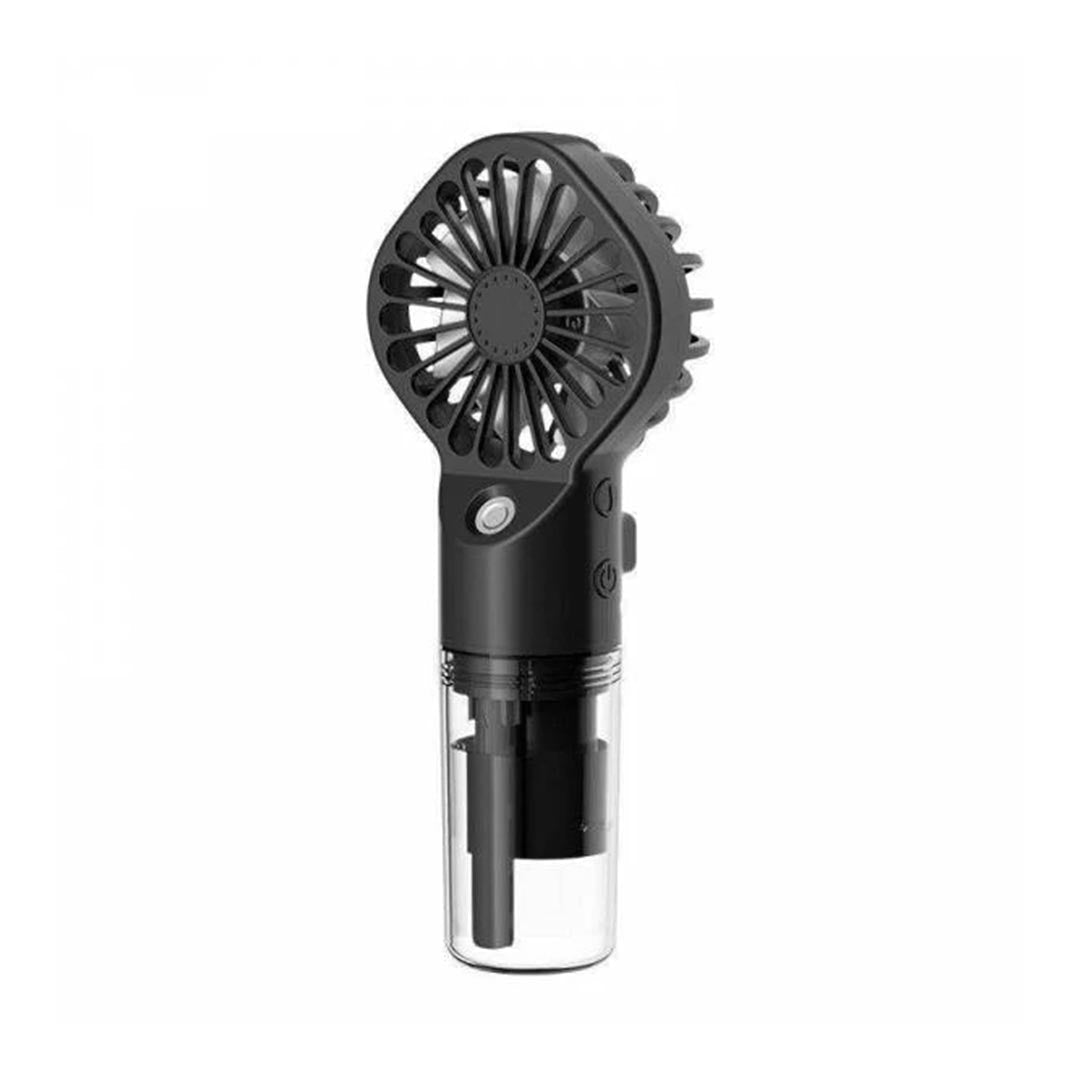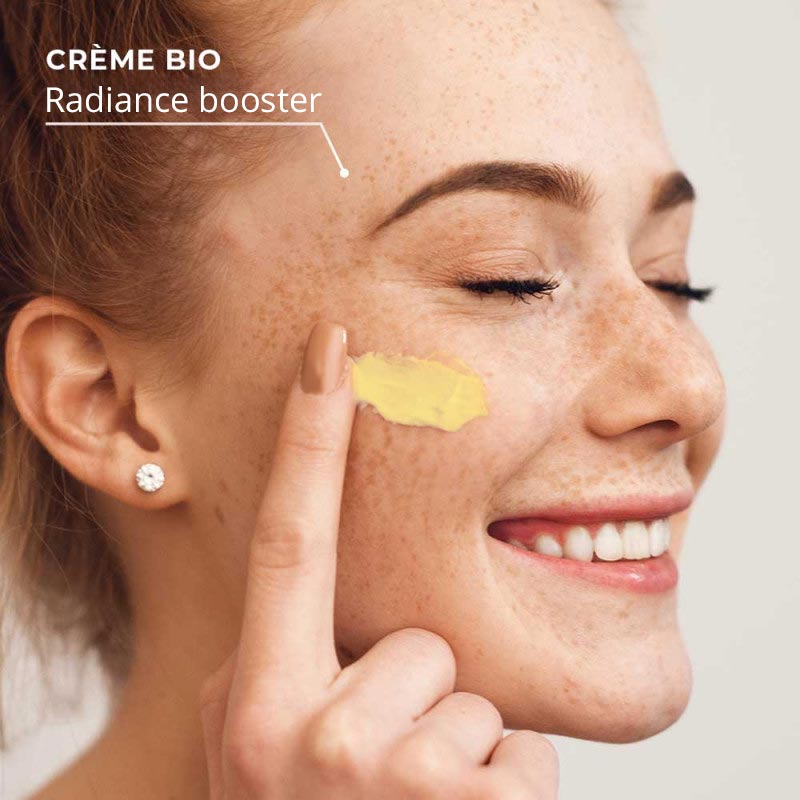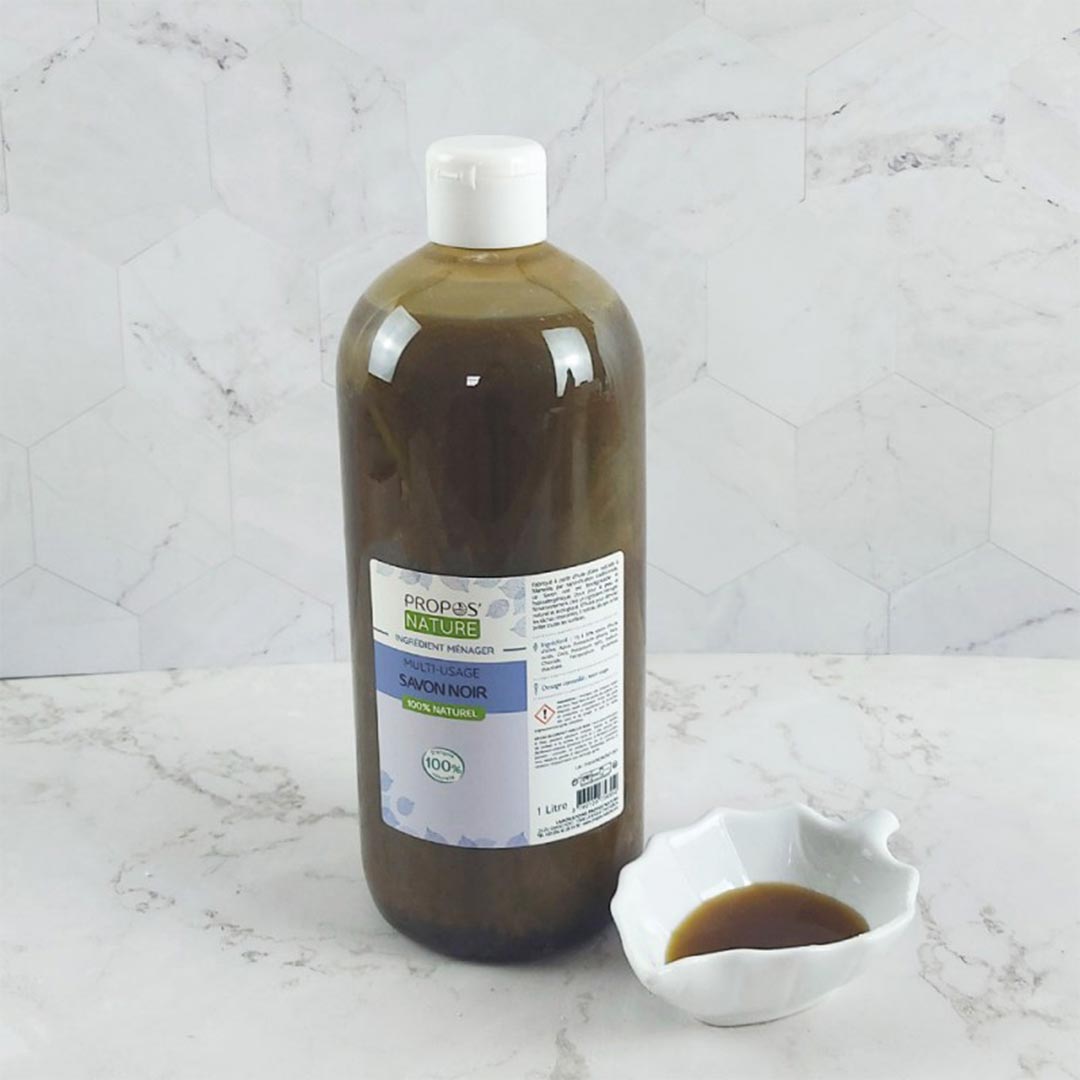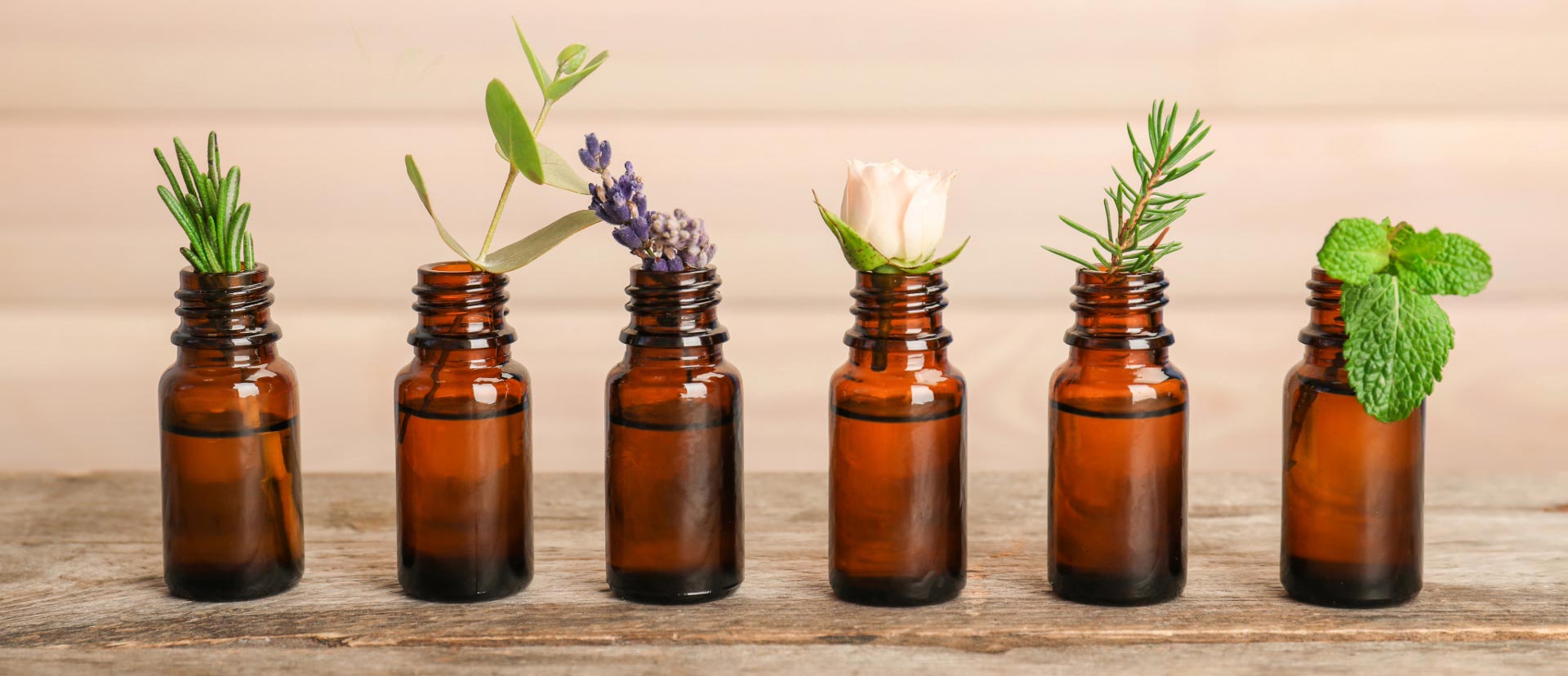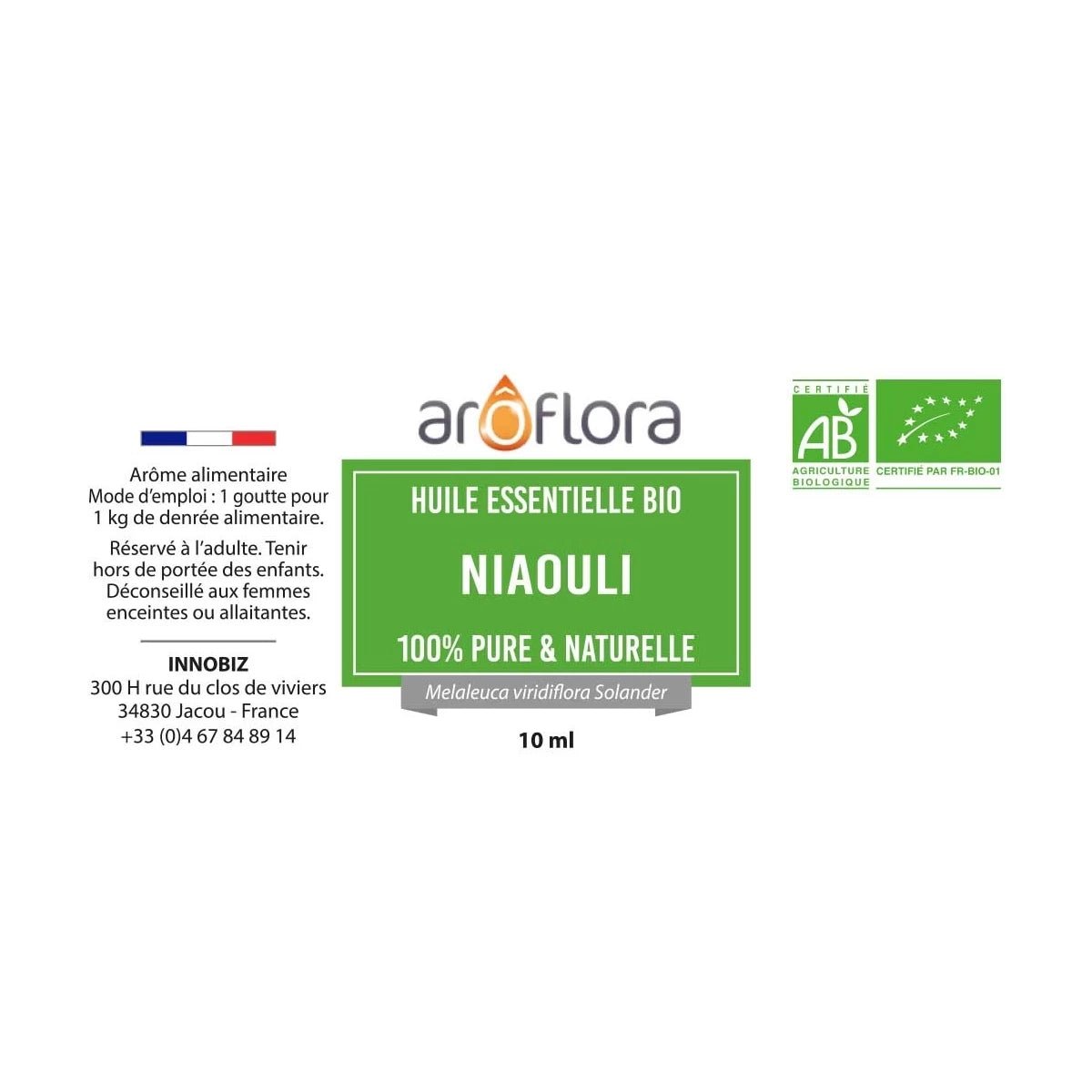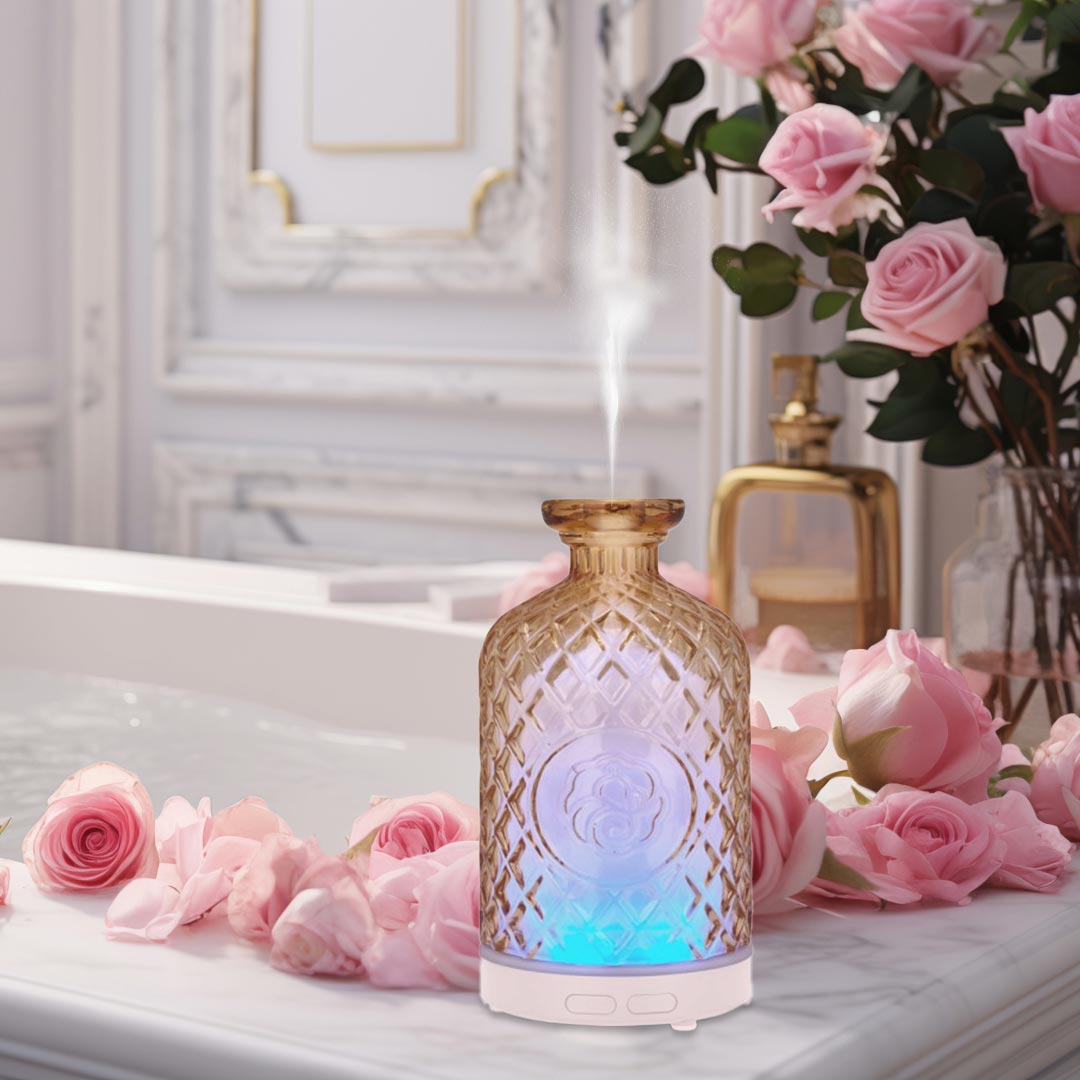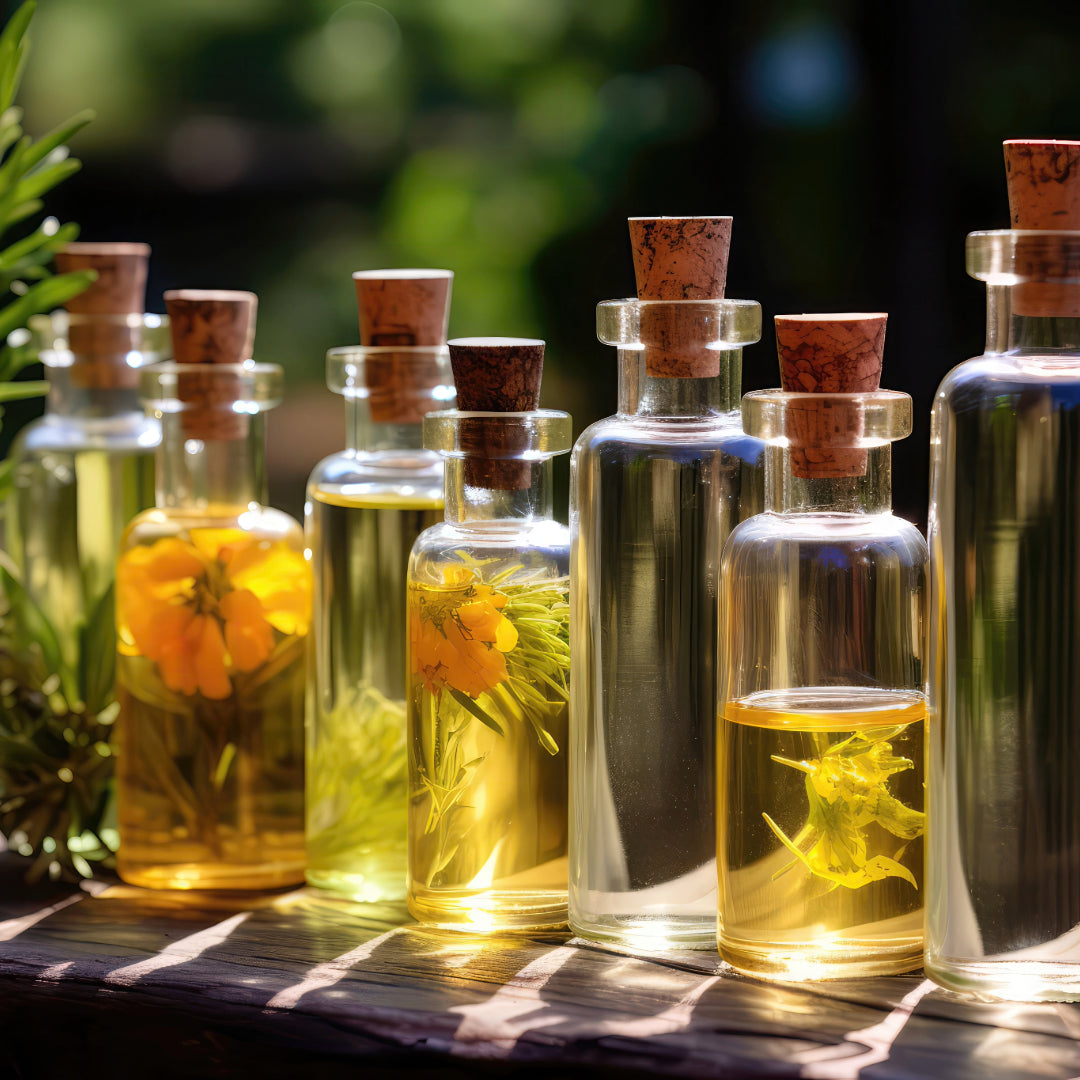Exclusive Guide to Niaouli Essential Oil


Melaleuca viridiflora Solander
Origin: Madagascar
Distilled part: Leaf twigs
Extraction method: Steam distillation
Cultivation: Certified Organic farming
Botanically and Biochemically Defined Essential Oil (HEBBD), chemotyped (HECT)
Color: Pale yellow
Scent: smells fresh and has a intense balsamic camphorlike, and balsamic aroma, close to eucalyptus.
Note: Middle note
Plant Family: Myrtaceae




SUPER POWERS
Analgesic
- Pain killer, reduces pain
Anti-allergenic
- prevent or minimize allergic reactions.
Antibacterial
- kills bacterial growth or prevents bacteria from growing
Anticatarrhal
- helps to remove excess mucus from the body
Antifungal
- prevents or kills fungus growth
Antiseptic
- prevents or combats bacterial infection
Antiviral
- kills or inhibits the growth of viruses
Decongestant
- used to relieve stuffy nose
Expectorant
- promotes the removal of mucus from the lungs, bronchi, and trachea. Loosens and thins mucus, making it easier to cough up and expel from the respiratory system.
Tonic
- refreshes, revitalizes and invigorates body functions
Vulnerary
- helps wounds to heal

USAGE TIPS
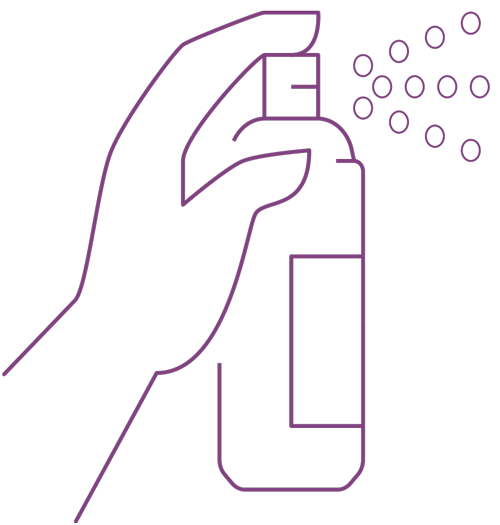
Jet Lag
Niaouli can effectively treat fatigue and lack of energy experienced during jet lag. Place 2 drops on a tissue and inhale regularly. Or add 10 drops to 300 ml of water in a spray bottle, and spray around the upper body throughout the day. Remember to shake well before spraying.

Protect your self
If you are working in front of a computer all day, use 4-10 drops in your diffuser at work, and you have the "workforce" of Niaouli working against radiation and the negative ions depleted by computer screens in the atmosphere.
You can also use the BULIA USB diffuser - just screw a bottle of Niaouli on, and use the USB on your computer to get the most out of aromatherapy.

Chest infection
Mix 4 drops with 1 teaspoon (5ml) of carrier oil, and massage on your chest area. Or, add 3 drops to steam inhalation, and repeat twice per day.
Niaouli oil helps to expel mucus and phlegm that has accumulated in the respiratory tract.

Stuffy nose
Add 3 drops to a steam inhalation, or mix 4 drops with 1 teaspoon (5ml) of carrier oil, and massage into the upper chest and each side of the nose. Niaouli is an decongestant and expectorant, therefore helping to clear congestion and relieve blocked nasal passageways.

Colds & Flu
Niaouli is non-toxic and can be used liberally. One of the fastest-acting and most effective applications of niaouli oil is to apply anywhere between 5-20 drops to the whole body during your shower. You can apply the drops to a loofah glove and work the drops into your skin along the energy meridians. This is refreshing and invigorating, and especially recommended in flu season, since it stimulates the defense mechanisms of the body.

Insect repellent
Add 5 drops to a tablespoon (15 ml) with a carrier oil and apply on your skin. This is a good choice during the day because niaouli is not photosensitive.

Mature skin
Niaouli speeds up the regeneration of skin cells which help fight signs of aging. Mix 4 drops with 1 teaspoon (5ml) of carrier oil (rosehip oil), and massage into the face and neck.

Fever
Diffuse 5 drops of the oil in a diffuser.
Or you can add 10 drops of Niaouli in a 300 ml spray bottle which you fill with cold water. Shake well and spray over yourself several times per day.

Concentration
Diffuse 5 drops of niaouli, or mix 3 drops of niaouli with 1 teaspoon (5ml) of carrier oil, and massage into the upper chest. Niaouli essential oil helps to clear the mind and encourage focus and mental clarity.

Fatigue
Place 2 drops on a tissue, and inhale regularly. Alternatively, inhale from the bottle. You can also use an inhaler, or a diffuser necklace. Or diffuse 5 drops in your home to clear sluggish air.

Immunity
Mix 4 drops of niaouli with 1 teaspoon (5ml) of carrier oil, and massage into the feet. Niaouli oil encourages the absorption of nutrients in the body, therefore helping to keep the immune system supported and strong.

Impetigo
Niaouli oil helps to clean the infection and prevent it spreading to other areas of the face and body. Mix 1 drop of the oil with 1 drop of coconut oil, and aply directly over the infection using a cotton bud.

Muscular pain
Mix 5 drops of niaouli oil with 1 tbs. (15ml) of carrier oil, and massage into the muscle. Or dilute 6 drops in 1 tbs. (15ml) of carrier oil, and add to a warm bath. Niaouli oil's powerful pain relieving capabilities make it an effective treatment for muscle aches and pains. Including muscle strain or post exercise pain.

Nerve pain
Niaouli oil is a powerful analgesic and helps to relieve pain by anaesthetizing nerves. Mix 4 drops with 1 teaspoon (5ml) of carrier oil, and gently massage over the area of concern. Repeat daily.

Rheumatism
Mix 4 drops with 1 teaspoon (5ml) of carrier oil, and massage into the painful joints. Alternatively, add 4 drops to a hot compress and wrap around the area of pain. Niaouli oil soothes and warms painful joints and is an effective pain reliever.

Toothaches
Niaouli oil helps to relieve the pain of toothache. Mix 3 drops with 1 teaspoon (5ml) of coconut oil, and massage along the jaw line and behind the ear.
You can also use Niaouli on dental floss to cleanse the spaces between the teeth.

Wounds and Cuts
Mix 3 drops with 1 teaspoon of coconut oil, and gently massage directly over the cut twice per day. Niaouli oil has strong disinfectant properties and is therefore capable of inhibiting the growth of harmful bacteria or microbes in cuts or sores. It helps to speed up the healing process and prevent infection.
Skin type
Niaouli can be used alone or in blends for these skin types:
- Balanced/Normal
- Aging
- Oily
- Blemished skin (pimples, acne)

Skincare
Niaouli essential oil, derived from the Melaleuca quinquenervia, is known for its potent antiseptic and antibacterial properties, making it an excellent choice for skincare. Here are some tips on how to incorporate Niaouli essential oil into your skincare routine:
1. Acne Treatment
Niaouli oil can be effective against acne due to its antibacterial and antiseptic qualities. To use:
- Add 1-2 drops of Niaouli oil to a cotton swab
- Apply it directly to the blemishes
2. Skin Cleanser
Niaouli oil can be added to your daily cleanser to enhance its cleansing properties:
- Add 1-2 drops of Niaouli essential oil to your regular facial cleanser.
- Use as usual to help cleanse and protect the skin from bacteria and pollutants.
3. Soothing Inflammation
Its anti-inflammatory properties make Niaouli oil suitable for soothing irritated skin:
- Blend 3 drops of Niaouli oil with a carrier oil and apply to areas of inflammation such as rashes or after waxing/shaving.
4. Scar and Wound Healing
Niaouli oil can aid in the healing process of scars and minor wounds:
- Dilute Niaouli oil with a carrier oil and apply to scars to promote healing and reduce visibility.
- For fresh minor wounds, after cleansing, apply a diluted mixture to aid in disinfection and speed up the healing process.
5. Scalp Health
Niaouli oil can also be beneficial for scalp health:
- Add a few drops to your shampoo to help combat dandruff and soothe scalp irritation.
Method of use & Amount to use
Aroma diffusers
Use 5-15 drops in your diffuser or the amount suggested with your diffuser.
Baths, Hot tubs, Jacuzzis
Bath: Diluted 3-8 drops
Start by running your bath as you normally would and keep the bathroom door closed to retain the aroma. Essential oils can be applied directly in their concentrated form or diluted.
For dilution, use a carrier oil, milk, milk powder, vegetable glycerin, seaweed powder, herbal powder, baking soda, salt, or Epsom salts to prevent skin sensitivity.
Add the essential oil to the bathwater, either neat or diluted, then stir the water with your hand to disperse the oil evenly before entering the tub. This method helps distribute the essential oil throughout the bath for a more enjoyable experience.
Hot tubs & Jacuzzis: up to 8 drops
Mix the essential oil into the water thoroughly using your hand. Since essential oils do not dissolve in water, they may leave residues in or around your pipes.
Compresses
3-10 drops in 120 ml of water
Learn more
Face masks, oils, and tonic
Face masks: 1 or 2 drops per 2 tbs. (15ml) of natural facemask.
Face oils: 12 drops in 30ml of carrier oil. For elderly and children use 6 drops per 30ml of carrier oil.
Use a dark-colored glass bottle, which helps protect your oils from light degradation. First, pour in the carrier oil. If you’re using a single essential oil or a premixed blend, add it directly to the carrier oil. If you’re crafting your own unique blend, mix your essential oils together first, then integrate the desired number of drops into the carrier oil. Remember, a little goes a long way, so only use a small amount for each application. Click here to read more about which carrier oil to choose.
Face tonic: 8-15 drops in 100ml of spring or distilled water or hydrosol.
Combine the oil and water before filtering through an unbleached paper coffee filter.
Our 100% organic and natural hydrosols can be used directly as a tonic. Shut your eyes and spray your face. Or spray a cotton pad and wipe your face with it.
Inhalation from bowl
3-5 drops per bowl of steaming hot water.
To use essential oils in steam inhalation, start by bringing a pot of water to a boil and then removing it from the heat. Add a few drops (typically 3-5 drops) of your chosen essential oil to the hot water.
Carefully lean over the pot, drape a towel over your head and the pot to trap the steam, and breathe deeply for several minutes to inhale the aromatic vapors, which can help relieve nasal congestion and other respiratory issues.
Lotions & Creams
12 drops to each 30 ml of natural, unfragranced lotion or cream.
You can make your own face cream with our neutral face cream as a base. For a 2% (adults) dilution use 40 drops in this 100 ml cream base.
For elderly and children use 20 drops (1%) in 100ml of cream.
Massage oil (for body)
12 drops to each 30 ml of carrier oil.
For elderly and children use 6 drops per 30ml of carrier oil.
Pillows
Place 1-3 drops of essential oil on the corner or underside of a pillow away from the eyes.
Room sprays
As room purifier: 10-20 drops per 475 ml of water.
As a general fragrance: 8-10 drops per 475 ml of water.
Scalp treatments
Add 6 drops in 15 ml of Jojoba oil or aloe vera gel. Shake well. Use 2-3 drops of your prepared blend for each application. Massage into your scalp. Alternatively, simply add the essential oil to a bottle of final rinse water after washing the hair.
Shampoos
5-10 drops in 100ml.
Essential oils can be added to any unscented shampoo that is composed of organic natural ingredients.
Showers
1-5 drops.
First, complete your usual washing routine. After that, apply a few drops of essential oil onto a washcloth or sponge and briskly rub it over your body while standing under the shower's running water. Inhale deeply through your nose to enjoy the aromatic steam, being careful to avoid applying the oil on your face and sensitive areas.
Sprays & Mists for Face and Body
For body: 10-20 drops to each 475 ml of water or hydrosol.
For face: 2-5 drops to each 240 ml of water or hydrosol.
Add the essential oil to warm water or hydrosol. Shake thoroughly, pour through an unbleached paper coffee filter, and place in a spray bottle. Cool before using.
Shake before each use.
Keep eyes closed when spraying the face.
Washes
15-32 drops in 240 ml of warm water.
A wash is a prepared mixture for washing infected areas such as cuts, grazes, and wounds.
Mix the essential oils and water together in a bottle and shake well. Keep it stored in the fridge for no longer than 14 days. Shake before each use.

Aromatherapy's Middle Notes:
Aromas categorized as middle notes are typically warm, rich, and powerful. Their scent lasts for two to three days.
The body is highly receptive to these fragrances, making them ideal for healing and relaxation. Soothing and restorative.
Middle notes are ideal for healing treatments that require repeated sessions, such as for chronic muscle pain or respiratory issues. They are also effective for treating migraines, PMS, and menstrual pains.
Some middle notes should not be used during pregnancy, so check each oil before use.
Examples of typical middle notes include:
Flower oils:
- Chamomile
- Geranium
- Lemon balm
Warm spicy oils:
- Clove
- Nutmeg
- Anise
- Black Pepper
Herbal oils:
- Fennel
- Marjoram
- Rosemary
- Juniper berry
Understand the Notes of Scents
In aromatherapy, the scent of an oil is often referred to as a "note." The secret behind a truly great fragrance is finding the perfect balance between the notes. Aromatherapy is about scents, and with practice, you will be able to recognize an oil's fragrance even if you might not know which plant the oil comes from. For example, you will be able to distinguish between citrus and floral scents or woody and minty fragrances. The scent is determined by the chemicals an oil contains. Because oils that smell alike often contain the same chemicals, they typically have similar properties.
Oils are categorized into so-called base, middle, and top notes. Knowing an oil's note is important when blending oils. A good blend—like most perfumes—normally contains a mix of all three notes, where the ratio between them varies depending on what the blend is used for. Additionally, an oil can contain more than one note—for example, ylang-ylang contains traces of all three notes and is often considered the perfect fragrance.
When creating a new fragrance, whether it's for a perfume or an aroma diffuser, you should use between 4-7 oils per blend. First, decide what type of blend you want to create, such as a refreshing one, and then choose notes with these characteristics to make up the main content of the blend. Dissolve the mixture in a carrier oil if you want to use it on the skin (12 drops in 30 ml of carrier oil).
| Blend | Top note | Middle note | Base note |
|---|---|---|---|
| Refreshing | 5 drops | 4 drops | 1 drop |
| Relaxing | 1 drop | 6 drops | 3 drops |
| Sensual | 1 drop | 4 drops | 5 drops |
| Balancing | 2 drops | 5 drops | 3 drops |
| Energizing | 8 drops | 1 drop | 1 drop |
MYRTACEAE PLANT FAMILY
The Myrtaceae family embodies a perfect balance and harmony among the four elemental forces—fire, air, water, and earth—showcased in their majestic presence across tropical regions on every continent. This family includes potent essential oil producers like cajeput, clove, eucalyptus, myrtle, niaouli, and tea tree, each renowned for its unique therapeutic properties. The structural integrity and noble appearance of these plants reflect their resilience against the dynamic interplay of earth and water under strong tropical influences.
Plants in the Myrtaceae family are characterized by their evergreen leaves, which are both robust and elegantly simple. These plants engage in a vibrant floral process, opening up to the world above the vegetative state, attracting pollinators such as insects and birds, which play a crucial role in their life cycle. The family is also known for its rich, sugary fruits like pomegranate, gooseberry, guava, myrtle fruits, and jaboticaba plums, delighting those who taste them.
Moreover, the deep tropical warmth these plants endure enhances their ability to produce etheric oils and aromatic resins, vital for their survival and utility. Myrtaceae also contribute culinary riches like clove and red pepper and are sources of incredibly hard woods, underscoring their profound connection with the earth element.
Niaouli Blends Well With These Essential Oils
Basil linalol, black pepper, cajuput, cedarwood, chamomile roman and german, cypress, eucalyptus lemon, eucalyptus radiata, fragonia, frankincense, geranium, ginger, lavender, lavender spike, lemon, lemongrass, manuka, marjoram sweet, myrrh, ravensara, ravintsara, rosemary, sage (Greek), tea tree.

The Main Chemical Composition of Niaouli Essential Oil
Niaouli essential oil, derived from the leaves of Melaleuca quinquenervia, is best known for its high content of 1,8-cineole, also known as eucalyptol. This key component typically makes up about 50-65% of the oil's composition. 1,8-cineole is responsible for many of the oil's therapeutic properties, including its expectorant, analgesic, and anti-inflammatory effects.
Besides 1,8-cineole, Niaouli oil contains several other constituents such as limonene, α-pinene, β-pinene, and viridiflorol, which contribute to its overall effectiveness as an antimicrobial, antiseptic, and immune stimulant. This rich and varied chemical profile makes Niaouli essential oil a valued resource in aromatherapy for respiratory health, skin care, and immune system support.
What are Chemotypes in Essential Oils?
Chemotypes in essential oils refer to the different chemical compositions that can occur in the same plant species due to variations in their growing conditions, harvest times, or geographical locations. These variations lead to the production of essential oils with distinct chemical profiles, each possessing unique therapeutic properties. Understanding chemotypes is crucial for aromatherapy and medicinal applications, as the efficacy and safety of the oils can vary significantly based on their chemical makeup.
Here's a breakdown of what defines a chemotype and why it matters:
1. Genetic and Environmental Influences: A chemotype is often influenced by the plant's environment, such as altitude, climate, and soil composition, as well as genetic factors. These variables can affect which chemical compounds are predominant in the oil.
2. Chemical Composition: Each chemotype of an essential oil will have a dominant chemical compound or set of compounds that characterize it. For example, Rosemary essential oil can be found in several chemotypes, such as cineole, camphor, and verbenone, each named after its principal component, which dictates its therapeutic properties and uses.
3. Therapeutic Properties: The presence of different chemical compounds means that each chemotype can be more effective for different health concerns. For instance, the cineole chemotype of Rosemary is excellent for respiratory issues due to its expectorant properties, whereas the camphor chemotype is more suited for pain relief and circulatory problems.
4. Safety and Application: Some chemotypes may be safer or more appropriate for certain applications than others. For example, an essential oil chemotype high in ketones might be more neurotoxic and thus used with more caution, particularly around children or pregnant women.
Understanding chemotypes allows us to choose the most appropriate and effective essential oil for specific therapeutic outcomes, ensuring both safety and efficacy in their applications.
Niaouli is Safe to Diffuse around Dogs
Pet Safe
If you have dogs in the house, these are the recommendations on how to diffuse your essential oils in a safe way: only use 3-4 drops of a particular essential oil in a water based aroma diffuser (UltraSonic).
Use no more than 4-6 drops total if using more than one essential oil, or use the amount in the diffuser recipes.
Be sure your aroma diffuser is in an area where your pet cannot knock it over. Always diffuse in an open area with the door open so your dog can leave the room if desired.
If your dog is sensitive to an oil you are diffusing, stop diffusing and get your dog outside for some fresh air. Contact your veterinarian if you are concerned.
Storage
Essential oils are sensitive to UV: always keep them in their original bottles (amber glass with codigoutte).
We advise you to store them in a cool place without light after opening.
For your mixtures, cosmetic and culinary preparations, always use a new bottle to avoid interactions.
Disclaimer
This information is intended to educate and inform, and are not intended to diagnose, treat, cure, or prevent disease. It is always recommended to consult with a healthcare professional or veterinarian before starting any regime with Essential Oils.

